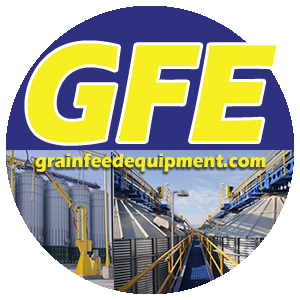Problem Solver
Carbon Fiber Rebar: CCS Group Uses High-Strength Material to Correct Concrete Tank Problems
CCS Group, LLC
• 855-752-5047 • http://www.ccsgrouponline.com

Problem
Reprinted from Grain Journal July/August 2017 Issue
Insufficient rebar causing vertical cracks on concrete tanks
Several years ago, a grain handler took possession of a shiny new slipform concrete elevator. Not too long after that, the operator noticed serious problems developing in the storage tanks.
Specifically, cracks were beginning to appear, running up and down the length of the tanks. An investigation conducted with a consulting engineer revealed that not enough steel rebar was installed during the construction process, resulting in a structure unable to stand up to the facility’s throughput.
The obvious solution would be simply to install more steel rebar. While this is a common solution used in the grain industry, it also has a number of drawbacks. It’s an expensive and time-consuming process, and the amount of shotcrete needed significantly reduces the amount of storage space available.
The grain handler shopped around and settled on a unique high-tech solution offered by CCS Group LLC, a concrete structural maintenance and repair specialist in Seward, NE (855-752-5047).
Solution
Installation of Near Surface Mount rebar made from carbon fiber composite material
Instead of traditional steel rebar, CCS suggested installing a new Near Surface Mount rebar made from a carbon fiber composite material. Carbon fiber is more often associated with the aerospace industry than grain elevator construction and repair, but it’s a material that is much tougher with much higher tensile strength than steel. In fact, carbon fiber is so tough that it generally must be machined with industrial diamond tooling.
“We’ve done some structural repairs before using carbon fiber materials,” says CCS CEO Cheyenne Wohlford. “We work with a shop here in Seward that does fabrication work with carbon fiber. This time, they were able to manufacture carbon fiber rebar and machine it to the right lengths and shapes ready for installation.”
Among the advantages to carbon fiber Wohlford cites:
• Because it is so much tougher than steel, less carbon fiber rebar is needed to meet the required structural concrete strength. In turn, that means less downtime for the project and fewer workers needed to install it.
• With less rebar required, the need for a shotcrete liner is eliminated, allowing for a larger bushel capacity in the remaining tank space.
Procedure. Here is the step-by-step procedure CCS workers used for the installation:
• Tank walls were scanned to determine the amount and location of steel rebar within the concrete.
• Engineers used the information from the scans to calculate the amount of additional reinforcing strength required and spacing for the new rebar.
• Workers marked out groove locations on the inside of the tank walls. Then they used a concrete saw to cut grooves in the wall. The wall was power washed to remove any dust and debris.
• Screws with rebar ties were installed in various places inside the grooves to hold the new rebar in the correct place.
• Rebar was placed carefully in the grooves to ensure full encasement in epoxy during an injection process.
• Abrasion-resistant epoxy was injected into the grooves above, below, and behind the rebar in enough quantity to fill the grooves completely.
• Workers used a putty knife to work the epoxy into the grooves and eliminate air voids.
• Epoxy was troweled flush with the existing tank wall. The epoxy has a higher abrasion resistance level than concrete to ensure the new rebar stays in place.
The process continues up the wall one groove at a time. This process can be engineered to replace only the missing rebar or with full hoops of carbon fiber if full structural reinforcement is needed.
About CCS Group, LLC
Seward, NE
855-752-5047
http://www.ccsgrouponline.com
View Company Profile →

